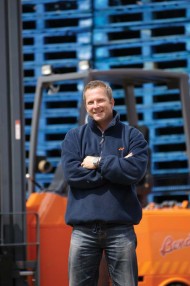 Recently I was asked by a journalist what I thought of the technology available on forklift trucks today. The question wasn’t part of the interview per se and therefore we didn’t get into any great detail but it’s something I have continued to think about over the past couple of weeks.
Recently I was asked by a journalist what I thought of the technology available on forklift trucks today. The question wasn’t part of the interview per se and therefore we didn’t get into any great detail but it’s something I have continued to think about over the past couple of weeks.
Obviously there is a place for such technology, especially where additional measures of safety and control are required to ensure stringent H&S standards are met. But I do believe that if safety is a main driver for looking at truck technology then the solution is not going to be found solely in the latest technological gismos but by going back to training and management basics as well.
At best, training can be perceived as a grudge purchase. At worst, it’s an ‘add on’ cost that can be cut. In my opinion neither is accurate. Training is actually about getting the best from your truck and your operator in order to make the most of your investment – as safely as possible.
This argument is made all the more acute as companies continue to look for ways to truly optimise their operations in order to ensure costs are reduced, or at the very least maintained, and efficiencies are increased.
As a result I would argue that training and management should actually be moving quickly up your priority list – over and above technology. The reason for this is because technology can only go part of the way to supporting warehouse management. Yes, it can give added peace of mind but really it comes down to the operator and his sense of responsibility as to whether or not efficiency and safety remain centre stage. With the right training, knowledge and support, safety becomes an intrinsic, almost subliminal, aspect of day-to-day truck driving.
A perfect example of this is when companies move from a standard reach truck operation to an articulated, VNA solution. It’s a move that requires forklift operators to reassess the way they work and training is a fundamental aspect of facilitating that mindset shift.
Not only does the VNA layout of the warehouse maximise space, the trucks you use coupled with training will maximise your operations. Safety, as a core aspect of that training, will come to further enhance the entire process.
Simon Brown,
Translift Bendi
Tel: 01527 527 4118




1 Comment
Something I have often thought about with regard to improving the design of forklift trucks is why is warehouse equipment rarely fitted with a load moment indicator. This would prevent the truck from being overloaded when perhaps unusual loads are handled. Why is it that a truck can actually lift more than the lifting capacity on the capacity plate? This means the truck may lift an item but can’t safely carry the item. As soon as we move the truck it will de stabilise and risk tipping forward.
Why don’t overhead guards have crumple zones so that they prevent injury to the driver from overhead falling hazards but dont crush the driver in an overturn situation. I wonder how many drivers would have been killed by falling items compared with the number of drivers killed by the overhead guard protection in the event of a tipover?
How about airbag technology in a tipover forwards or sideways?
The Toyota SAS system is probably the only innovation in design safety since fitting the overhead guard to forklift equipment.
Regards Tony Pallot, Jersey.